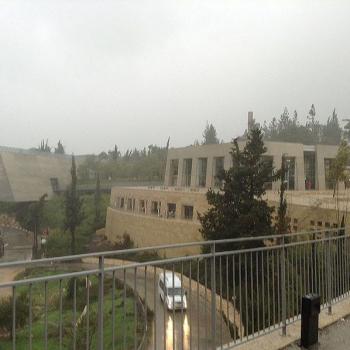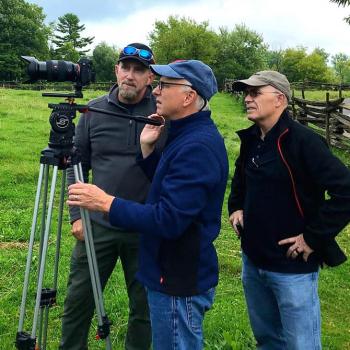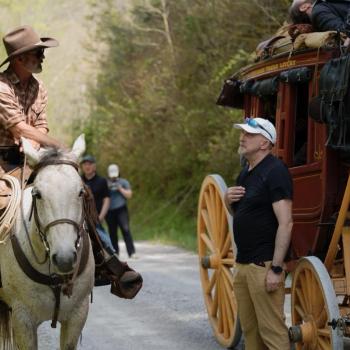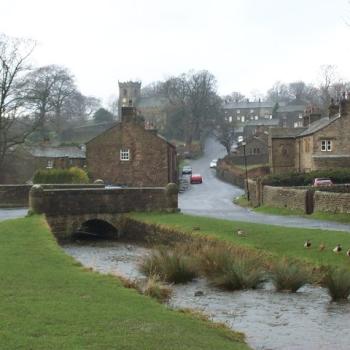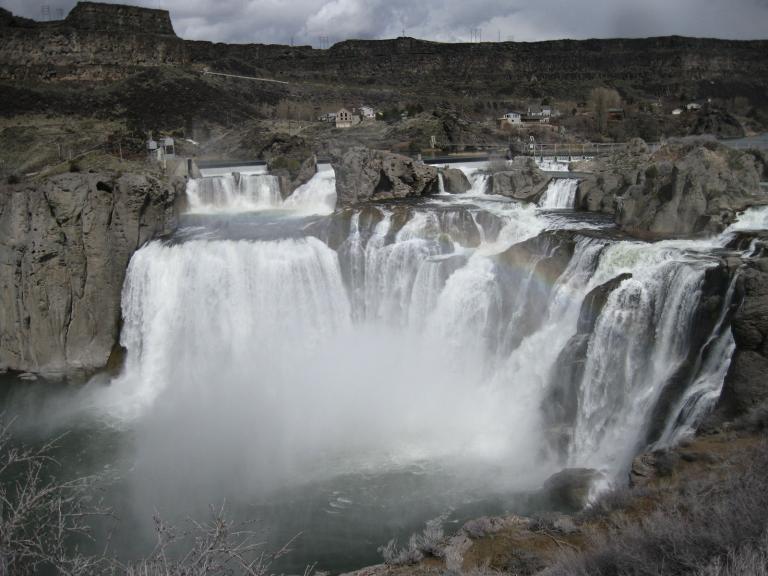
***
As is customary on Fridays, a new article went up today in Interpreter: A Journal of Latter-day Saint Faith and Scholarship:
“Plural Marriage: Beauty for Ashes,” by Julie A. Russell
Abstract: When Eliza R. Snow agreed to become one of Joseph Smith’s plural wives, she feared she would never be looked upon as a decent woman. Nevertheless, she accepted Joseph Smith’s proposal and eventually became a strong advocate of the practice. Reading about her understanding of plural marriage and the many testimonies of others who practiced it, I have realized that plural marriage teaches us much about humility, keeping God’s commandments, and following His prophets. In nineteenth-century America, it provided a way for women and men to set aside self and embark on a soul-refining journey filled with trials and obstacles that parallel many of the trials and obstacles of our day.
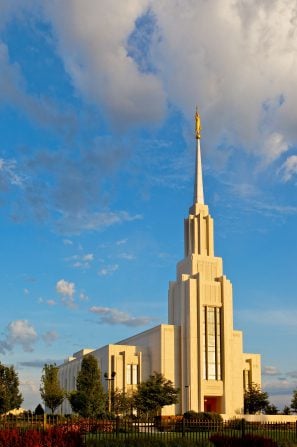
On the way up to Idaho today, we passed by a number of temples — first among them, of course, the one that’s taking shape not far from our home, across the freeway, in Orem. Passing through Layton, we exited the freeway for another reason, but decided to drive by the new temple there, which is rapidly moving toward completion. And we got off the freeway again in Twin Falls, primarily to take a look at Shoshone Falls (which were flowing at a much lower rate than the last time we were here, probably owing more to seasonal variation than to drought, but certainly not unaffected by the current water problems of the American West) but also to drive around the Twin Falls Idaho Temple.
Over the years I’ve had a thought recur to me in connection with the vicarious work for the dead that’s done in Latter-day Saint temples such as these. I know that I’ve mentioned it here before, but, with our recent trip to Germany very much in mind, I’m doing so again now:
One of the great achievements of the twentieth century was the application of industrial methods to the systematic extermination of mass numbers of humans. Monumental effort and even ingenuity were devoted to the systematic transformation of persons — unique individuals, with complex personalities and minds and non-reproducible biographies — into non-persons.
I’ve referred numerous times to my father’s involvement, along with elements of the Eleventh Armored Division, in the liberation of the Nazi death camp at Mauthausen, Austria. It was a pivotal event in his life, and we spoke about it on many occasions. So the phenomenon of the concentration camp has had a personal interest for me since I was a child. I revisited KZ-Mauthausen two or three weeks ago, just a couple of days after going for the first time to the site of KZ-Dachau. (A few years ago, I paid my respects at KZ-Buchenwald.)
And then there is the Soviet Gulag, so horrifyingly chronicled by the great Aleksandr Solzhenitsyn, whom I read extensively in high school. And Mao’s “Cultural Revolution.” And the Cambodian “killing fields.” And the Rwandan genocide. And the great Ukrainian “terror famine.” And on and on and on.
I’ve felt it a duty to visit such places as Mauthausen, and Gusen, and Dachau, and Buchenwald. And the Holocaust Museum in Washington DC. And Yad Vashem, in Jerusalem. These visits are horrible, but, to me, they’re necessary.
One of the most haunting places in Yad Vashem is a hall of records containing the names of Holocaust victims. Book after book after book after book. But just as horrifying is the acknowledgment in that hall that there are entire Jewish villages and towns that were completely wiped out. No records survive. We don’t even know the names of those who died.
The Nazis’ goal was not only extermination or liquidation. It was erasure. And so it has been with other totalitarian regimes.
And I contrast to that the vicarious work of the temples, where we try to remember and to devote individual attention, so far as we’re able, to everybody who has ever lived. No matter how obscure or insignificant.
On the morning that I first formulated my thoughts, we attended the temple in San Diego, California. That day, my wife was assigned the name of a French woman who lived in the late 1500s. I received the name of a man named Joshua Wilson, who was married in Pope County, Illinois, on 5 August 1830. As Latter-day Saint temple-goers will know, such matters are fairly typical when we visit the temple to perform vicarious ordinances for the dead.
I tried to imagine Joshua Wilson’s life. He was, I’m guessing, most likely born around 1805 or 1810. That would have made him a bit old to have participated in the American Civil War — during which Pope County, notwithstanding strong ties to the South, contributed an exceptionally large number of Union soldiers — but it’s certainly conceivable that he fought nonetheless, and it’s rather more likely than not that he had at least one son who did. Perhaps a son who died in the fighting.
Anyway, it’s also probable that nobody has spoken the names of either Joshua Wilson or that sixteenth-century French lady for many generations. (In her case, for perhaps several centuries.) Even for Joshua Wilson, there’s likely nobody alive who ever knew anybody who knew him. He and she have both been forgotten. And let’s have no sentimental twaddle about how they live on in the memories of their descendants. Because they don’t. Unless it’s in the memory of a family history researcher.
In the temples of the Latter-day Saints, however, their names have been spoken again. They’ve been remembered. Valued. Served.
That’s a remarkable thing. The temples stand in direct opposition to the extermination camps of the Nazis and the Communists. They are monuments to Latter-day Saint belief in the immortality and the worth — the eternal worth — of each individual human soul. They are, truly, revolutionary.
Posted from Sun Valley, Idaho



